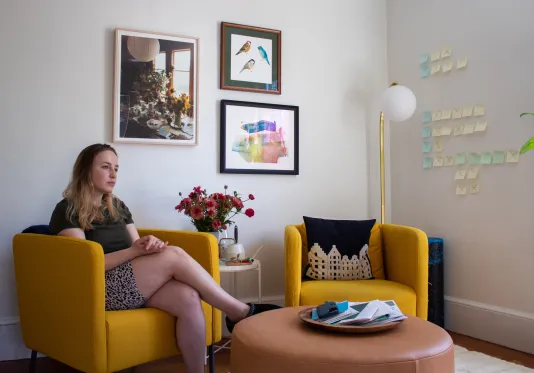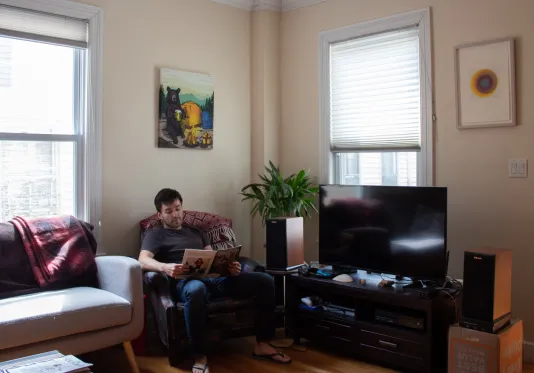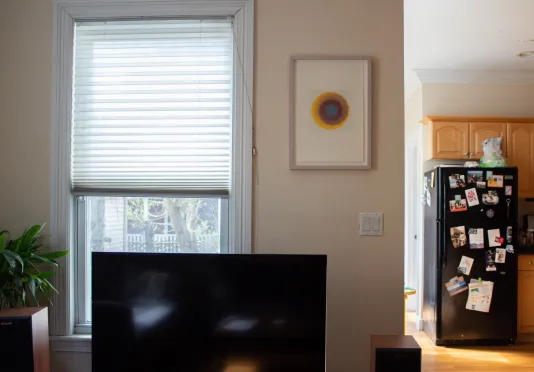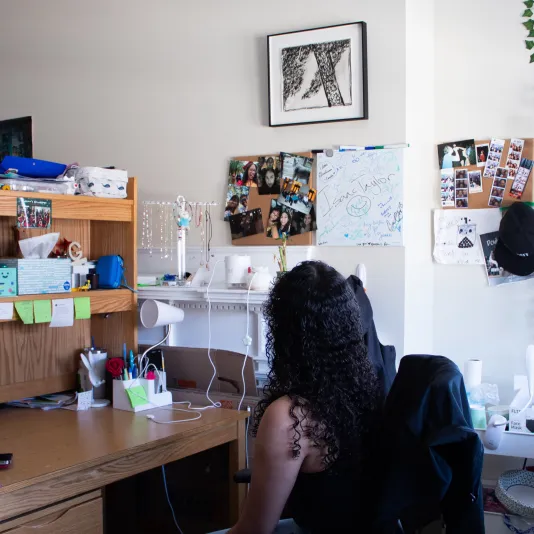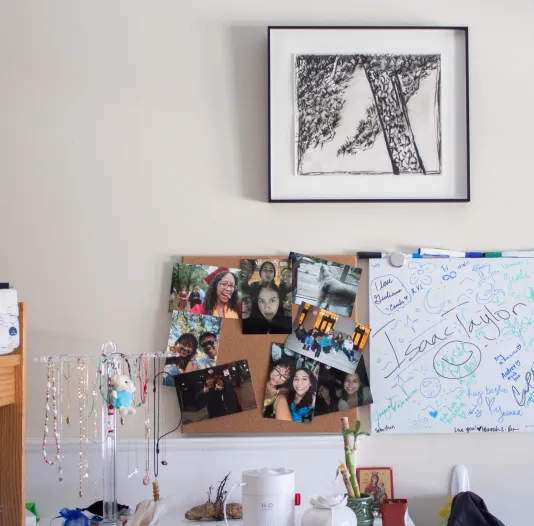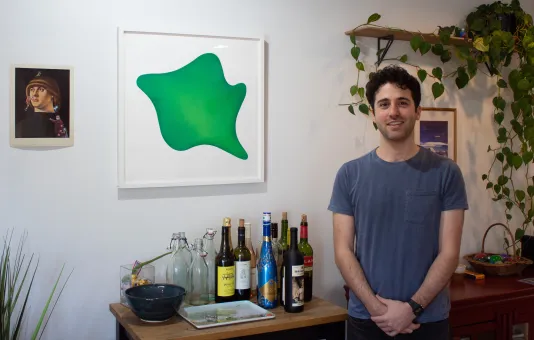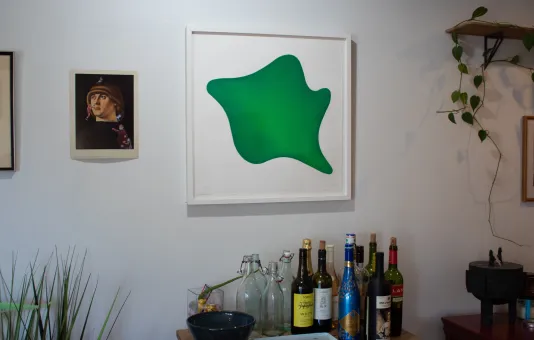How did you learn about the Student Lending Art Program? What made you want to participate?
I got an email from the dorm spam and it said that the List Center was giving away different artworks if you got picked from the lottery and I like art so I said why not? I entered with a couple of my friends but I was the only one that actually got it so it was kind of unexpected.
What drew you to this artwork?
There were quite a few still available when I went to pick. There were a couple of others that had a bit more color and, at first, I was looking for something more colorful, but I thought this was a really nice piece of artwork and it’s an older style of chinese painting. I thought it looked like a tree and I really like trees. It felt very nice and calm and I like the brush style so that’s why I picked it.
How’d you decide where to place the artwork in your dorm?
I wanted it to be somewhere I could see it. I had already filled up my walls so that was kind of the only open space, but it’s also on display.
What conversations has this artwork sparked?
I do point it out to people. My friends all agree that it was a good choice and it does fit in with the room. They’ve said it seems like something that I would pick out, so it goes with a lot of things that I like. People ask about it a lot, how I got it, why I borrowed it… so I explain to people that it was through the lottery and that MIT has a Visual Arts Center. When I first got it, I went to the List to get it with a couple of friends that didn’t know about the building. It’s cool for people to find out that MIT has more arts centered initiatives.
